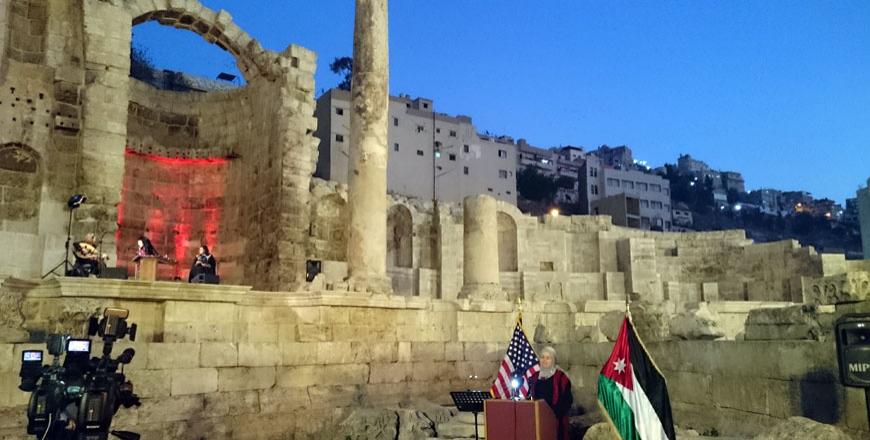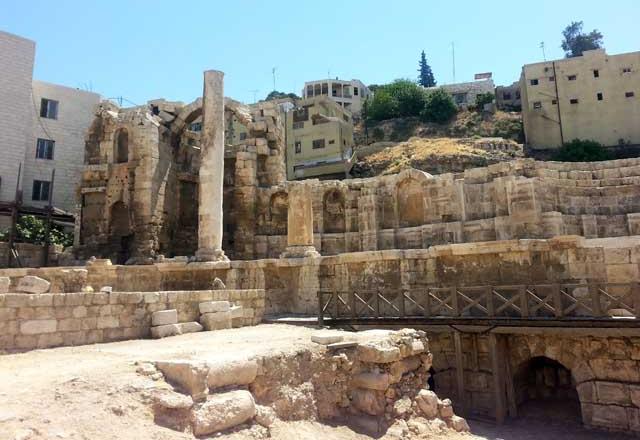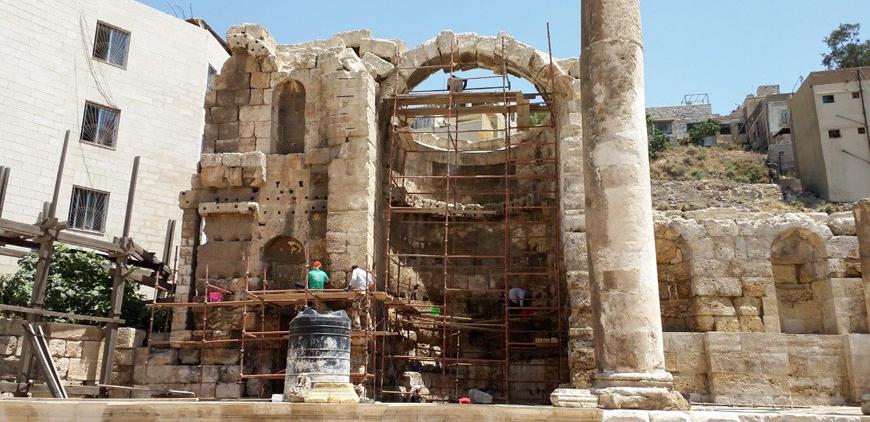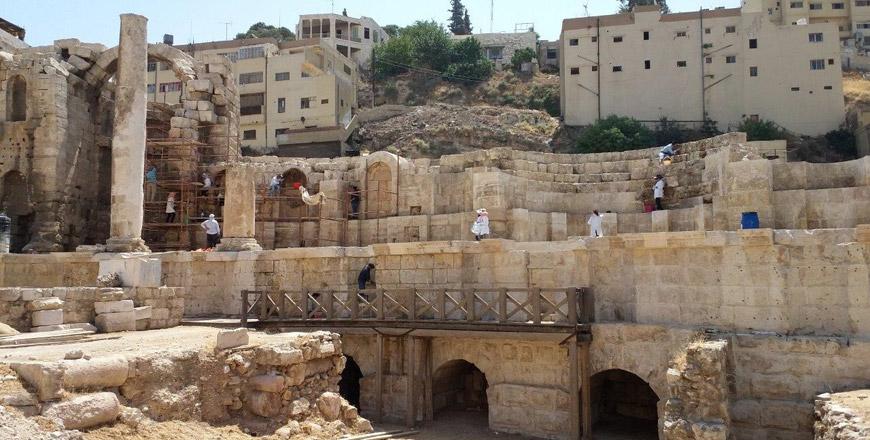You are here
Second phase of Amman Nymphaeum restoration project launched
By Ahmed Bani Mustafa - Nov 15,2016 - Last updated at Nov 16,2016

A view of the Amman Nymphaeum, which is a Roman monument that was built during the 2nd century AD (Photo by Ahmed Bani Mustafa)
AMMAN — The second phase of the restoration and rehabilitation of the Roman Nymphaeum in Amman was launched on Tuesday.
The project is implemented in partnership between the Hamdi Mango Centre for Scientific Research (HMCSR) at the University of Jordan (UJ), the Ministry of Tourism and Antiquities, and the Greater Amman Municipality (GAM).
US Ambassador to Jordan Alice G. Wells, Amman Mayor Aqel Biltaji, Tourism Ministry Secretary General Issa Gammoh and Department of Antiquities Director General Monther Jamhawi attended the launch ceremony, which was held at the Nymphaeum site in downtown Amman.
In her speech at the ceremony, Wells commended the government’s commitment to ensuring the conservation of cultural heritage resources.
She announced a grant worth $140,000 from the US ambassador’s Fund for Cultural Preservation to the HMCSR.
Jordan has been a primary beneficiary of this effort, receiving nearly $1.9 million in grants to fund 12 unique cultural heritage conservation projects in places like Petra, Quseir Amra, Um Al Jimal, Um Qais and the Jordan Valley since 2001, the ambassador added.
The second phase of the project aims at conserving and restoring the downtown monument, including treating the deterioration and improving the stability and durability of the architectural and ornamental elements of the building, a statement from the US embassy said.
Also during the second phase, the site will be transformed into an archaeological park to become an outdoor museum and a performance space on par with other downtown ancient monuments such as the Odeon and the Roman Theatre, the statement added.
Biltaji highlighted the historical and archaeological importance of the Roman Nymphaeum, stressing GAM’s keenness to develop the site.
In his speech, he announced an additional $60,000 as a contribution from GAM to add to the US grant, making the total amount $200,000.
“We as GAM promise you that we will do everything we can to preserve and bring this place back,” he said at the ceremony.
“The Nymphaeum’s structure is considered one of the most important buildings still standing in the heart of the Decapolis city Philadelphia,” he added, voicing hope that the site will soon be open to the public as a tourist attraction.
Jamhawi said the collaboration of several entities to restore the archaeological site provides technical and legal support for the national project.
The HMCSR is an independent unit at the UJ which was established by a grant from the late Ali Mango in 1999 to support interdisciplinary and research projects in the fields of applied science and technology.
Nymphaea, Hellenistic structures later incorporated into Roman architecture and city planning, were built over caves or grottoes with running water, which were believed to be sacred to mythological nymphs. The structures were areas of public gathering and seen as a sign of a city’s wealth and standing.
Amman’s Nymphaeum is a Roman monument that was built during the 2nd century AD, when Amman (then Philadelphia) was part of the Roman Empire.
Like many of the archaeological sites across the country, it was damaged in the devastating earthquake that shook the region in 747AD.
Years of disrepair, pollution and urban expansion have also taken their toll on the ancient site.
Related Articles
The Hamdi Mango Centre for Scientific Research (HMCSR) will benefit from a $200,000 US grant for the restoration and rehabilitation of the Roman Nymphaeum in downtown Amman.
AMMAN — Around the corner of a busy downtown Amman street, as customers bargain with vendors over vegetable prices and passers-by flip throu
AMMAN — The United States’ Ambassadors Fund for Cultural Preservation (AFCP) has awarded 15 small grants and one large grant with additional














